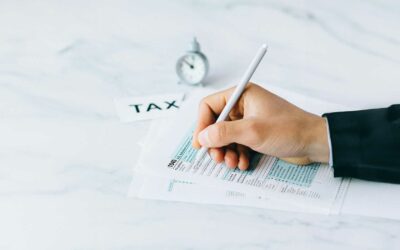How you might get a stamp duty refund
Buying a home is expensive enough.
It is made worse by stamp duty, properly know as Stamp Duty Land Tax, or SDLT. This is the tax you pay to the government for the privilege of buying your own property.
Calculating how much your stamp duty will be is complicated. The total value you pay SDLT on (sometimes called the ‘consideration’) is usually the price you pay for the property or land.
You pay when you buy a freehold or leasehold property or land above the threshold price, currently £250,000 for residential properties. But how much you pay will depend on the cost of the property, whether or not you are first time buyer, already a property owner and buying a second property, or whether or not you are a UK resident.
You pay 5% on the portion of the purchase price from £250,001 to £925,000, 10% from £925,001 to £1.5 million and 12% above.
However, you can claim a discount if the property is your first home. This means you’ll pay no SDLT up to £425,000, and 5% SDLT on the portion from £425,001 to £625,000. You’ll usually have to pay 3% on top if you already own a residential property and a 2% surcharge if you are not a UK resident.
Calculations may be difficult, but at least it is easy enough to pay. If you have a solicitor, agent or conveyancer, they’ll file your return and pay the tax for you on the day of completion. They’ll then add the tax to their fees.
Getting a refund
With the average cost of a home in the UK now £263,800 according to Zoopla, most people will find themselves paying a substantial SDLT bill.
But it may be possible to get a refund.
There are two scenarios where this may be possible. The first is where you have not completed the sale on your first home when you complete on another and pay 3% as a second home buyer as a result.
You can claim back the extra 3% SDLT if the property you’re buying is replacing your main residence and you sell your previous main home within 36 months (or in exceptional circumstances, even longer). You can apply for a repayment of the higher rates of Stamp Duty Land Tax at the gov.uk website.
The second route is more complicated. When you buy a property, there is sometimes a chance that the previous owners won’t have left it completely empty. Carpets, curtains, and even some white goods might be left behind. The sellers may be doing you a favour (as well as themselves) by leaving them.
But they can have an impact on your stamp duty bill.
These items, known as “chattels” are legally defined as items that can be removed from a home without causing significant damage – rather than a fixture, such as the bath or the front door.
Chattels are usually exempt from stamp duty, while fixtures are not.
HM Revenue and Customs (HMRC) doesn’t provide a definitive list, but it’s generally agreed that chattels are things such as carpets, curtains, kitchen white goods that aren’t fully integrated, electric and gas fires light shades and free-standing furniture. If the agreed sale price of a property includes chattels, you could end up paying more stamp duty than you need to.
It may be possible to get a refund on appeal to the taxman if you can show that the price paid was agreed on the basis that it included the chattels and produce some third-party evidence of their value.
SDLT refunds should be made within 12 months and 14 days of the property purchase date, although you may be able to stretch this to up to four years in certain circumstances.
You’ll need to write to HMRC with evidence of the chattels you believe you’ve paid stamp duty on, including a list of assets and their valuation, plus the SDLT calculation, refund due and amendments to the original SDLT return.
Getting help with tax matters
It is not just SDLT that causes confusion and overpayment. Tax is complicated and expert tax planning that covers all types of tax can help you avoid paying too much.
At Continuum we can help you look at your tax position, see where you have been too generous to the taxman in the past, and where you may be entitled to disappoint him in the future. Why not see what we can do for you?
www.gov.uk/stamp-duty-land-tax
https://www.gov.uk/guidance/stamp-duty-land-tax-buying-an-additional-residential-property
Stamp Duty Land Tax online and paper returns – GOV.UK (www.gov.uk)
Are UK house prices falling in April 2024? – Zoopla
A new 3 stamp duty surcharges – Zoopla
The information contained in this article is based on the opinion of Continuum and does not constitute financial advice or a recommendation to any suitable tax strategy, you should seek independent financial advice before embarking on any course of action.
Your home or property may be repossessed if you do not keep up repayments on your mortgage.
Levels, bases and reliefs from taxation are subject to individual circumstances and may be subject to change.
The Financial Conduct Authority does not regulate taxation advice.



